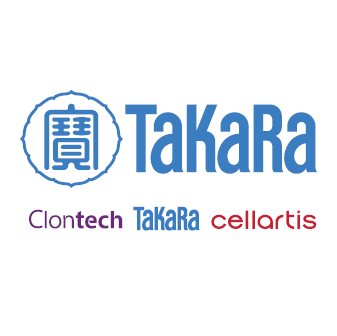Lentiviral Particles for Fluorescent Labeling of Organelles
Lentiviral Particles for Fluorescent Labeling of Organelles
The Vectalys Constitutive Lentiviral Reporter Vectors are prepackaged lentiviral particles expressing fluorescent protein genes for transducing mammalian cells. The expression of fluorescent protein genes is driven by an EF1α promoter. These VSV-G pseudotyped viruses are capable of infecting both dividing and non-dividing cells. The high purification level of these lentiviral particles allows transduction of primary cells and immortalized cell lines without inducing any toxicity to the cells, even at high multiplicity of infection (M.O.I.).
Overview
- What does 109 TU/ml mean?
- In each microliter, there will be at least 1 x 106 functional lentivirus particles.
- Each 60-µl kit is sufficient for 30 transductions (using an MOI of 10) in a 6-well plate containing 2 x 105 cells/well.
- Ready-to-use particles can be added directly to cells:
- Highly concentrated lentiviral particles; all lots are >109 transducing units (TU) per ml (functional titer, not a just a particle count).
- High-purity lentiviral particles—transduce cells without cytotoxicity.
- Expression can be monitored in living cells by fluorescence microscopy
- AcGFP1 is a true monomeric green fluorescent protein with spectral properties similar to those of EGFP.
- mCherry is the most widely adopted monomeric red fluorescent protein.
- Learn more about the properties of these fluorescent proteins.
- Particles are available for labeling the nucleus, endoplasmic reticulum, actin, mitochondria, tubulin, endosome, golgi, and plasma membrane.
- These vectors have a puromycin resistance cassette and the stable clones integrating these constructs can be selected using puromycin.
Applications
- Cell organelle/structure labeling—monitor protein localization, protein trafficking, organelle dynamics, etc.
- Simple method for generating stable reporter cell lines
Various cell types can be transduced with Vectalys lentiviral particles, including primary and stem cell lines

Various cell types can be transduced with Vectalys lentiviral particles, including primary and stem cell lines. The suggested seeding concentration and MOI vary depending on the specific cell type to be transduced. When the recommendations in this table are followed, transduction efficiency is high for immortalized, primary, and stem cells, regardless of whether they are adherent or suspension cells.
Overview of the process for generating high-titer lentiviral particles

Overview of the process for generating high-titer lentiviral particles. Through this proprietary, large-scale process Vectalys is able to produce very high-titer, high-purity lentiviruses ready for transduction of many different cell types. The high titer allows for manipulation of even hard-to-transduce cells, like primary cells or stem cells, and the exceptional purity prevents cytotoxicity.
Subcellular staining of actin using recombinant lentivirus to deliver and express fusions of actin to mCherry (Cat. # 0020VCT rLV.EF1.mCherry-Actin-9) and AcGFP1 (Cat. # 0013VCT rLV.EF1.AcGFP1-Actin-9), respectively

Subcellular staining of actin using recombinant lentivirus to deliver and express fusions of actin to mCherry (Cat. # 0020VCT rLV.EF1.mCherry-Actin-9) and AcGFP1 (Cat. # 0013VCT rLV.EF1.AcGFP1-Actin-9), respectively.
Not all titers are the same! Comparison of cells transduced with 100 M

Not all titers are the same! Comparison of cells transduced with 100 M.O.I. of lentivirus provided by Clontech/Vectalys versus 100 M.O.I. of lentivirus provided by Vendor S. Each premade virus preparation expresses a green fluorescent protein when transduced. Clontech/Vectalys provides a functional titer, so every cell treated with our virus preparation was transduced with multiple copies of virus, leading to strong expression of the fluorescent protein. By contrast, the titer provided by Vendor S includes nonfunctional lentivirus particles as a large percentage of the titer so 100 M.O.I of their virus preparation is not sufficient to effectively transduce the cells.
Map schematics of expression cassettes contained in particles for labeling subcellular compartments (e.g. actin, tubulin, mitochondria, etc.) with AcGFP1 fluorescent protein

Map schematics of expression cassettes contained in particles for labeling subcellular compartments (e.g. actin, tubulin, mitochondria, etc.) with AcGFP1 fluorescent protein.


